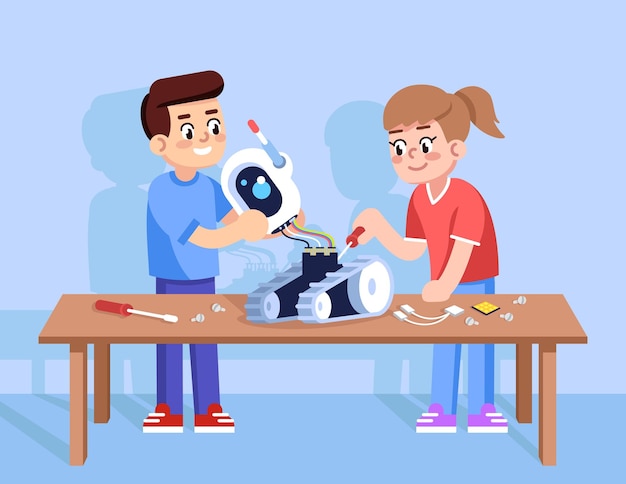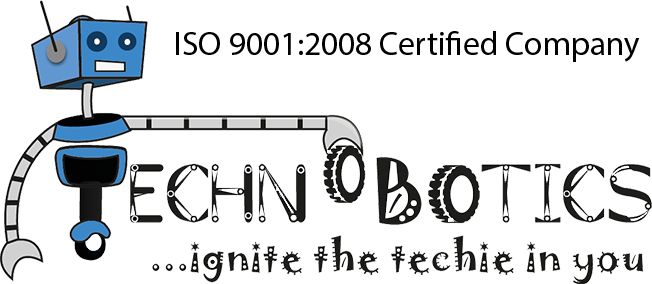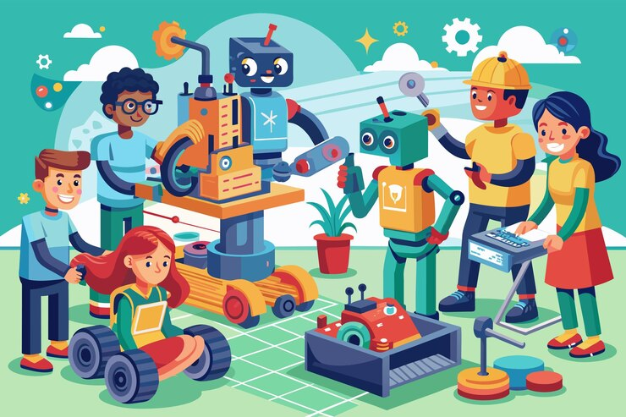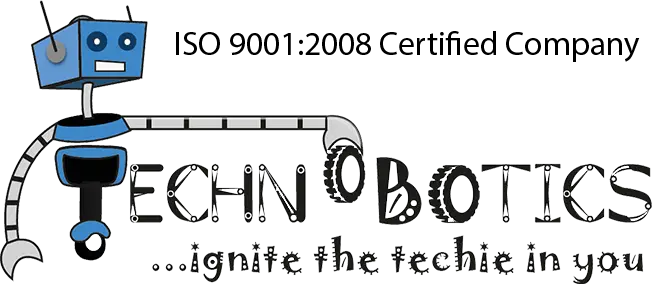Education is evolving faster than ever, and one of the most exciting developments is the integration of robotics into in-school programs. This innovative approach is transforming how we teach and learn, especially in computer science and programming.
Why Integrate Robotics In Education?

Robotics for elementary students is not just about building robots; it’s about developing critical thinking, problem-solving, and teamwork skills. As students work together to design, build, and program their robots, they learn important concepts in science, technology, and engineering.
Robotics caters to different learning styles. Some students excel in traditional lecture-style classrooms, while others thrive in hands-on, interactive environments. A robotics programming institute provides a perfect balance, allowing students to learn at their own pace while collaborating with their peers.
Moreover, robotics for elementary students bridges the gap between theory and practical knowledge. Students who learn programming concepts through robotics are more likely to understand how these concepts can be used to solve practical problems in manufacturing, healthcare, and even space exploration.
Another advantage of robotics for elementary students. It can inspire creativity and innovation. When students are free to design and build their robots, they are encouraged to think outside the box and develop unique solutions to challenges. This fosters an entrepreneurial mindset that will serve them well in future career paths.
In addition to fostering academic and technical skills, a robotics programming institute teaches important life skills such as perseverance, resilience, and adaptability. Building and programming robots is not always easy, and students will inevitably encounter setbacks. However, overcoming these challenges builds confidence and teaches valuable lessons about persistence and determination.
Bringing Computer Science To Life With Robotics
In today’s digital age, understanding computer science is crucial for success in almost every industry. Many parents and educators are seeking the best computer science schools and programming institutes for their children. However, traditional classroom settings often struggle to keep students engaged and excited about these complex subjects.
This is where robotics comes in. By introducing robotics classes into schools, educators of the best computer science schools can make learning computer science and programming fun and interactive. Instead of just reading about algorithms and coding, students can see their creations come to life through the movements and actions of robots.
Incorporating robotics into computer science education for school students offers a dynamic approach to learning that fosters creativity, problem-solving, and critical thinking skills. Here’s how the best computer science schools can seamlessly integrate robotics with computer science in the classroom:
- Hands-on Projects: Provide students with robotics kits or platforms like LEGO Mindstorms or Arduino. These kits allow students to build and program robots, applying computer science concepts in a tangible, engaging way.
- Coding Challenges: Introduce coding challenges involving programming robots to perform specific tasks or navigate obstacles. Students can use languages like Python or Scratch to code their robots, reinforcing coding principles while experimenting with robotics.
- Interdisciplinary Learning: Encourage interdisciplinary learning by integrating robotics with subjects like mathematics, physics, and engineering. For example, students can calculate the trajectory of a robot’s movement or explore physics principles through robot design.
- Project-Based Learning: Implement project-based learning activities where students collaborate to design, build, and program robots to solve real-world problems. This approach promotes teamwork, communication, and problem-solving skills, mirroring the collaborative nature of professional robotics projects.
- Competition and Events: Organize robotics competitions or events where students can showcase their creations and compete against their peers. These events motivate students to excel and provide opportunities for networking and learning from others.
- Guest Speakers and Field Trips: Organize field excursions to robotics firms or laboratories, or invite industry speakers to speak. Exposing students to real-world robotics applications can inspire their interest and provide insights into potential career paths in robotics and computer science.
- Inclusive Approach: Ensure inclusivity by providing access to robotics education for all students, regardless of gender or background. Encourage diversity in robotics clubs and teams to foster a supportive and inclusive learning environment.

However, you might wonder, where can I find a robotics class near me? The good news is that robotics programs are becoming increasingly common in schools worldwide. Many elementary schools now offer robotics classes as part of their curriculum, allowing even young students to explore the world of programming and engineering.
Conclusion
Incorporating robots into educational initiatives can transform learning and provide students with the skills they need to succeed in the twenty-first century. Robotics lessons may inspire the next generation of innovators, problem solvers, and leaders by making computer science and programming fun, interesting, and approachable. Thus, if you’re searching for your child’s top programming or computer science schools, think about signing them up for a robotics class and watch as their enthusiasm for studying soars.



